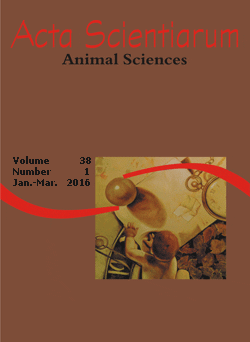<b>Anesthetic properties of <i>Ocimum gratissimum</i> essential oil for juvenile matrinxã
Abstract
The matrinxã fish is suitable for Amazonian aquaculture, exhibiting positive characteristics such as good growth and feed conversion ratio. However, it is a very active fish and must be anesthetized for handling. The present study evaluated the use of Ocimum gratissimum essential oil (EO) as anesthetic for juvenile matrinxãs. A first experiment assessed the induction time to anesthesia of 7 concentrations (20, 30, 40, 50, 60, 70 and 80 mg L-1 of O. gratissimum (EO). A second experiment investigated the physiological response to the anesthetic through analysis of tissue and blood parameters collected 0h (T0) and 24h after (T24) the experimental protocols that were applied to 4 groups: control, handling without O. gratissimum (EO) and handling with two EO levels. In the first experiment, fish were anesthetized within 10 min in the lowest EO concentration (20 mg L-1), and recovered within 2 min. As concentrations increased times to induction to anesthesia decreased from 10 min to 1 min (approximately). In the second experiment, plasma lactate, glucose and ammonia increased in the treatments involving handling and EO concentrations. After 24h, fish had recovered from the experimental procedures, and no mortality was observed in the next 30 days. Ocimum gratissimum was shown to be a suitable anesthetic for matrinxãs, and causes minimum stress to fish in the concentrations and exposure time applied.
Downloads
DECLARATION OF ORIGINALITY AND COPYRIGHTS
- I Declare that current article is original and has not been submitted for publication, in part or in whole, to any other national or international journal.
The copyrights belong exclusively to the authors. Published content is licensed under Creative Commons Attribution 4.0 (CC BY 4.0) guidelines, which allows sharing (copy and distribution of the material in any medium or format) and adaptation (remix, transform, and build upon the material) for any purpose, even commercially, under the terms of attribution.
Read this link for further information on how to use CC BY 4.0 properly.








































